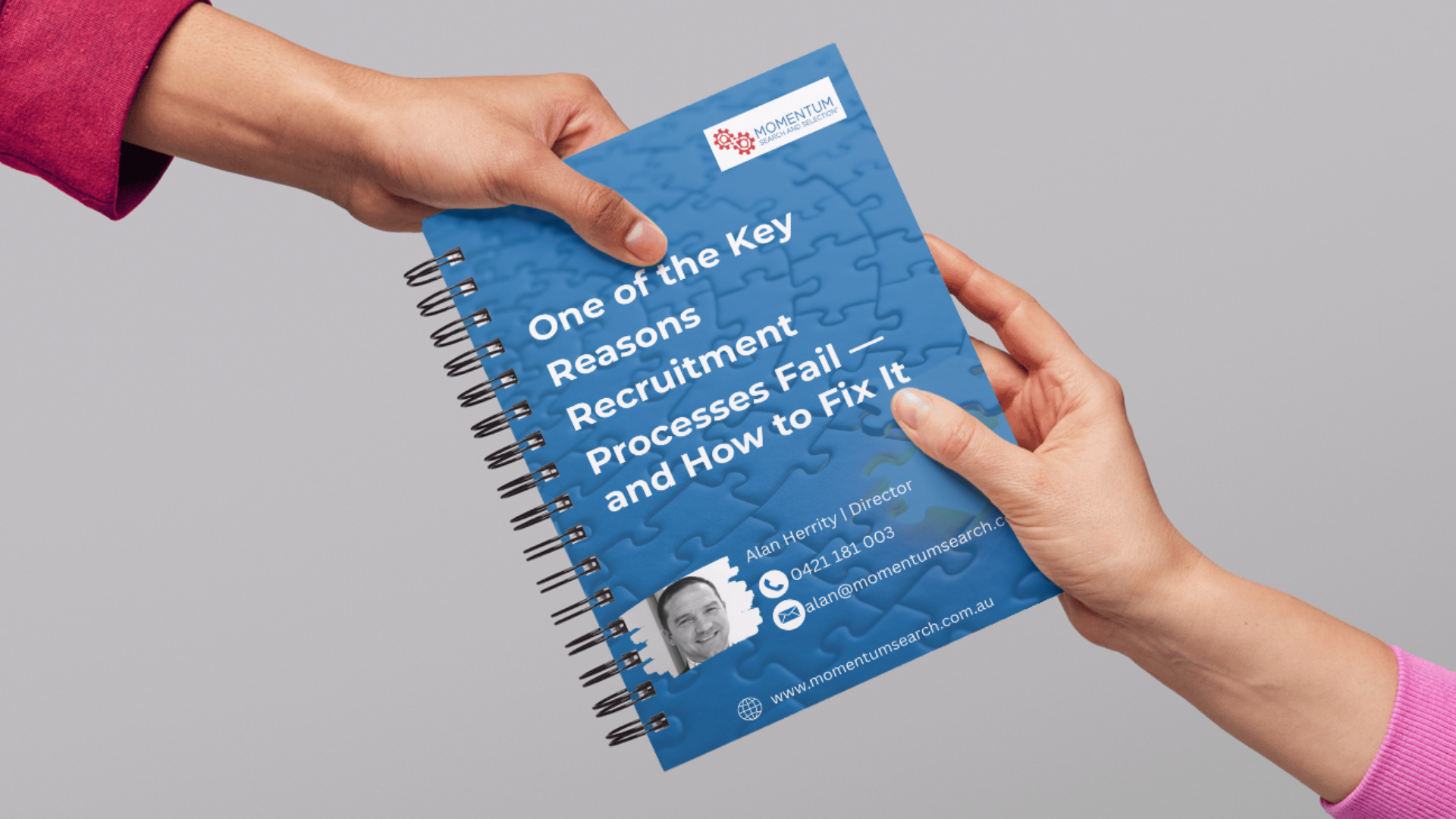Alan Herrity | May 27, 2025
Case Study - Interim Head of Technology

Client Industry
Industrial Sector
The Challenge
Momentum Search and Selection was introduced to the CEO of a Melbourne-headquartered organisation facing an urgent leadership challenge. The Head of Technology was exiting, and the organisation needed a stabilising presence discreetly and urgently.
Key Complexities Include
- The organisation had reached a critical juncture: replacing the incumbent was essential, but doing so without destabilising operations required swift, discreet action.
- There were risks to project delivery, critical system stability, and the potential for a period of instability within the team.
- A previous recruitment agency had been discreetly supporting the client but was unable to identify and appoint a suitable leader within the required timeframe.
- The client needed a combination of strategic skills and the ability to be hands-on and drive delivery. The candidates who had been previously presented were either too strategic or lacking in the depth required to perform this role.
Momentum Search and Selection was asked to rapidly assess the situation and advise on a solution. Our differentiation is defined by our ability to combine our extensive executive search experience with agile interim delivery.
Our Solution
We conducted a situation diagnostic and agreed with the client that the most effective course of action was to appoint an Interim Head of Technology to ensure continuity and operational stability.
- We used our trusted network and discreetly identified and secured an interim technology leader who could inherit a challenged function and deliver immediate impact. Our candidates are known and trusted experts.
- The interim executive was onboarded smoothly, quickly integrating with senior stakeholders and ensuring business-as-usual performance during a period of transition.
- We proposed an Interim Solution for the short-term and urgent requirement. We also agreed to run a comprehensive retained search for the long-term employee solution.
The Result
- Appointment completed within a few weeks of initial engagement.
- The interim executive provided immediate stability and leadership.
- The Interim Head of Technology swiftly stabilised the team, managed project delivery risks, and mitigated key systems risks alongside addressing additional technology priorities.
- The client’s CEO, CFO and senior leadership team expressed high satisfaction with the pace, rigorous process, and quality of delivery.
- Our successful interim management outcome enabled the organisation to pause and plan a robust retained search for a permanent successor. This search was also carried out by Momentum Search and Selection.
Interim Leadership. Immediate Impact.











